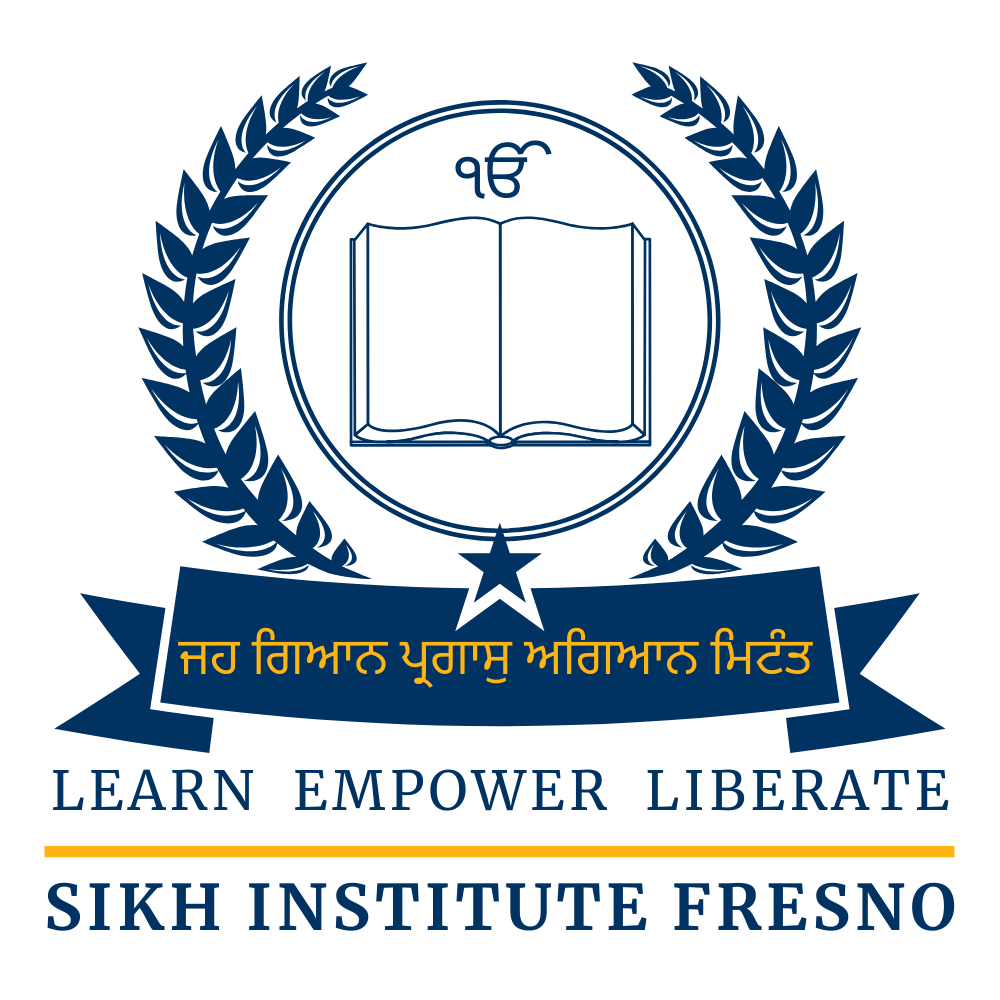In the Sikh wedding ceremony, the four hymns of Laavan hold deep spiritual significance as they guide the couple through the sacred nuptial rounds. Each Laav, or round, represents a unique stage of spiritual and marital unity, culminating in the soul-bride and divine groom realizing their ultimate destiny as one soul in union with God.
The Laavan hymns were composed by Guru Ram Das (1534 to 1581 CE) for his own wedding to Bibi Bhani. These verses symbolize the fusion of the bride and groom’s souls into a single, conscious being who is spiritually wedded to God.
The verses of the Laavan are derived from the Guru Granth Sahib, the holy scripture of Sikhism. Below, each of the four Laavs is presented with its original Gurmukhi text, followed by an English interpretation of its meaning.
The First Laav
The first verse of the Laav emphasizes that marriage is the ideal state of life for a Sikh, encouraging the couple to begin their journey together with the guidance of the Guru.
Har peh-larr-ee laav par-vir-tee karam drirr-aa-i-aa bal raam jeeo.
(In the first round of the marriage ceremony, the Lord sets out His instructions for performing the daily duties of married life.)
Baanee breh-maa ved dharam drirr-hu paap tajaa-i-aa bal raam jeeo.
(Rather than reciting hymns of the Vedic Brahman, embrace the righteous conduct and renounce sinful actions.)
Dharam drirr-ahu har naam dhi-aav-hu simrit naam drirr-aa-i-aa.
(Meditate on the Lord’s Name; embrace and enshrine the contemplative remembrance of the Naam.)
Satigur gur pooraa aa-raadh-hu sabh kilvikh paap gavaa-i-aa.
(Worship and adore the Guru, the Perfect True Guru, and all your sins shall be dispelled.)
Sehaj anand hoaa vadd-bhaa-gee man har har mee-thaa laa-i-aa.
(By great good fortune, celestial bliss is attained, and the Lord seems sweet to the mind.)
Jan kehai naanak laav peh-lee aa-ranbh kaaj rachaa-i-aa.
(Servant Nanak proclaims that, in this, the first round of the marriage ceremony, the marriage ceremony has begun.)
The Second Laav
In the second verse, the Laav speaks of the bride’s awakening love and devotion as she begins a new chapter of life with her husband, guided by the True Guru.
Har dooj-rree laav satigur purakh milaa-i-aa bal raam jeeo.
(In the second round of the marriage ceremony, the Lord leads one to meet the True Guru, the Primal Being.)
Nirbho bhai man hoe houmai mail gavaa-i-aa bal raam jeeo.
(Fearing God, the mind becomes fear free and the filth of egotism is eradicated.)
Nirmal bho paa-i-aa har gun gaa-i-aa har vekhai raam hadoo-rae.
(In fear of the Immaculate Lord, sing the glorious praises of the Lord, thereby beholding His presence.)
Har aatam raam pasaar-i-aa su-aa-mee sarab reh-i-aa bhar-poo-rae.
(The Lord, the Supreme Soul and master of the universe, is pervading and permeating everywhere, fully filling all places and spaces.)
Antar baahar har prabh eko mil har jan mangal gaa-ae.
(Within or without, there is only one Lord God; meeting together, the humble servants of the Lord sing songs of joy.)
Jan naanak doo-jee laav cha-laa-ee anhad sabad vajaa-ae.
(Servant Nanak proclaims that, in this, the second round of the marriage ceremony, the divine unstruck sound resounds.)
The Third Laav
The third Laav expresses the bride’s deepening devotion and detachment from worldly concerns as she becomes fully dedicated to her spiritual union with her husband and God.
Har tee-jarr-ee laav man chaao bha-i-aa bai-raag-ee-aa bal raam jeeo.
(In the third round of the marriage ceremony, the mind is filled with divine love.)
Sant janaa har mel har paa-i-aa vadd-bhaa-gee-aa bal raam jeeo.
(Meeting with the humble saints of the Lord, by great good fortune God is found.)
Nirmal har paa-i-aa har gun gaa-i-aa mukh bo-lee har baa-nee.
(The Immaculate Lord is found by singing the glorious praises of God, by uttering the word of God.)
Sant janaa vadd-bhaa-gee paa-i-aa har ka-thee-ai akath kehaanee.
(The humble Saints, by great good fortune, attain God when describing His indescribable description.)
Hir-dai har har har dhun oup-jee har japee-ai mastak bhaag jeeo.
(The Name of the Lord resounds within the heart while contemplating God when one realizes the destiny inscribed on their brow.)
Jan naanak bo-lae teejee laavai har oup-jai man bai-raag jeeo.
(Servant Nanak proclaims that, in this, the third round of the marriage ceremony, the mind is filled with divine love for the Lord.)
The Fourth Laav
The fourth and final Laav describes the ultimate spiritual union where the bride and groom, now united as one, experience perfect joy and contentment in their union with each other and with God. Upon completing this round, they are considered husband and wife.
Har chou-tha-rree laav man sehaj bha-i-aa har paa-i-aa bal raam jeeo.
(In the fourth round of the marriage ceremony, the mind becomes peaceful, having found the Lord.)
Gurmukh mil-i-aa su-bhaa-e har man tan mee-thaa laa-i-aa bal raam jeeo.
(The Guru’s disciple meets the Lord with intuitive ease when surrendering sweetly the mind, soul, and body.)
Har mee-thaa laa-i-aa mere prabh bhaa-i-aa andin har liv laa-ee.
(The Lord seems sweet to the one possessed by God, who is lovingly attuned night and day on the Lord ever.)
Man chind-i-aa fal paa-i-aa su-aamee har naam vajee vaa-dhaa-ee.
(The heart’s mind becomes fruitful and attains its desire when the Lord’s name resoundingly resonates within.)
Har prabh thaakur kaaj rachaa-i-aa dhan hir-dhai naam vi-gaa-see.
(The Lord God Master blends with the bride whose heart blossoms in the illumination of His name forthwith.)
Jan naanak bolae chou-thee laa-vai har paa-i-aa prabh avin-aa-see.
(Servant Nanak proclaims that, in this, the fourth round of the marriage ceremony, the eternal Lord God is attained.)
This sacred journey of Laavan beautifully encapsulates the spiritual essence of marriage in Sikhism, guiding the couple towards a harmonious union with each other and the Divine.
